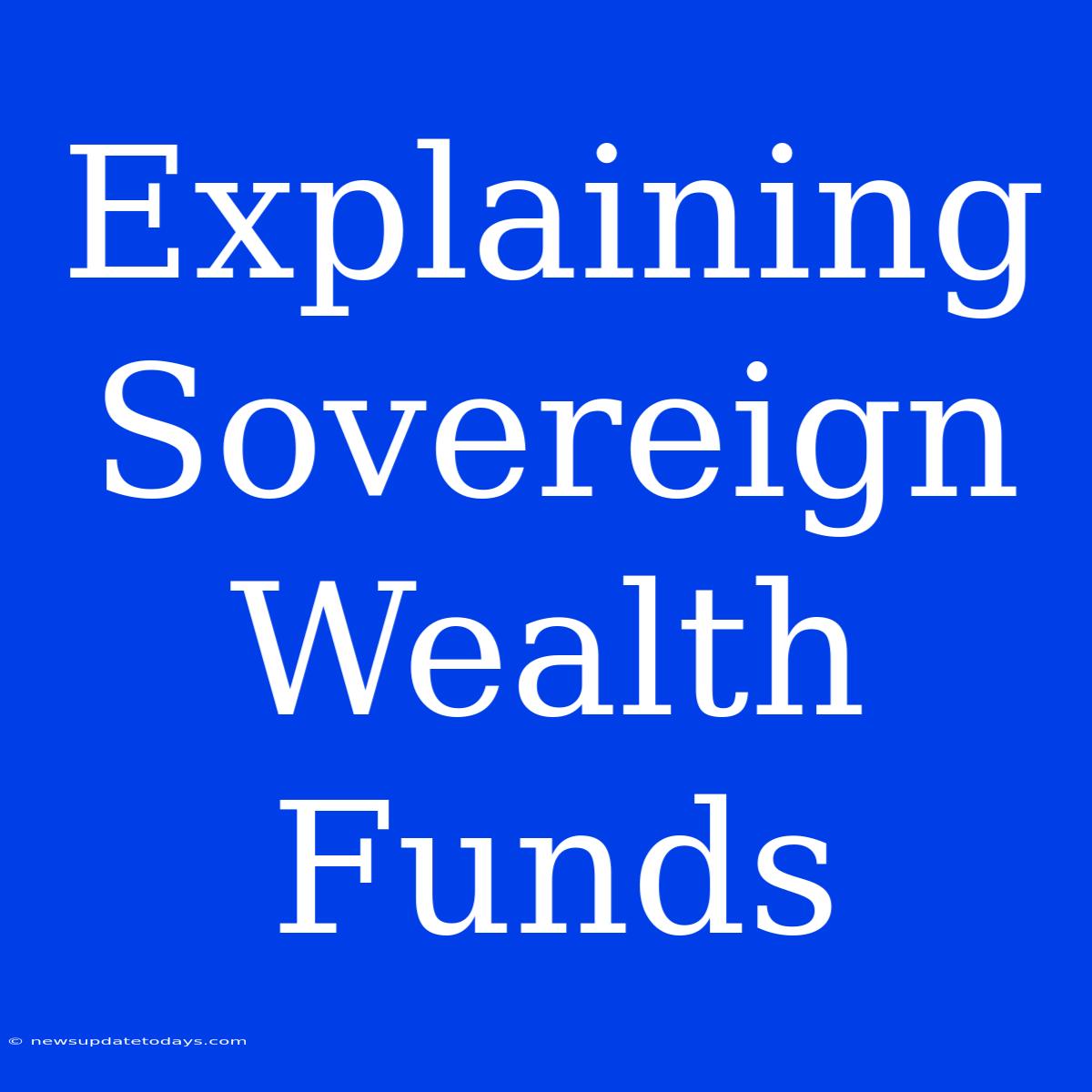Understanding Sovereign Wealth Funds: A Deep Dive into National Treasure Chests
Sovereign Wealth Funds (SWFs) are investment vehicles controlled by governments. They represent a significant portion of global investment capital, and understanding how they function is crucial in comprehending international finance and economic policy. This article will delve into the intricacies of SWFs, exploring their origins, objectives, investment strategies, and the controversies surrounding them.
What are Sovereign Wealth Funds?
At their core, SWFs are state-owned investment funds. They accumulate wealth from various sources, most commonly:
- Revenue from natural resources: Oil, gas, minerals, and other commodities generate substantial revenue for many countries, often forming the foundation of their SWFs. Examples include Norway's Government Pension Fund Global (oil and gas) and the Abu Dhabi Investment Authority (oil).
- Foreign exchange reserves: Governments may accumulate excess foreign currency reserves, which can then be invested through an SWF. This strategy provides diversification and potentially higher returns compared to holding reserves in low-yield assets.
- Budget surpluses: When a government consistently generates budget surpluses, these funds can be channeled into an SWF for future use or long-term investment.
Objectives of Sovereign Wealth Funds:
The objectives of SWFs vary depending on the country and its specific economic goals. Common objectives include:
- Stabilizing the economy: SWFs act as a buffer against fluctuations in commodity prices or other economic shocks.
- Saving for future generations: Many SWFs aim to secure long-term financial stability for the nation, ensuring intergenerational equity.
- Developing the national economy: Investment strategies may focus on domestic infrastructure projects, promoting economic growth and development.
- Diversifying investments: SWFs often invest globally, spreading risk and maximizing returns across different asset classes.
Investment Strategies of SWFs:
SWFs employ diverse investment strategies, tailored to their specific objectives and risk tolerances:
- Passive investing: Some SWFs adopt passive strategies, tracking market indices for stable, long-term returns.
- Active investing: Others actively manage their portfolios, seeking higher returns through targeted investments in equities, bonds, real estate, and private equity.
- Public vs. Private investments: The balance between public and private market investments varies across different SWFs. Some favor established public markets, while others focus on private equity and venture capital for potentially higher returns.
Controversies Surrounding SWFs:
Despite their economic benefits, SWFs are not without controversy:
- Transparency and governance: Concerns persist regarding the transparency and governance of some SWFs, particularly those with less developed regulatory frameworks.
- Political influence: The potential for SWFs to exert undue political influence in host countries is a subject of debate.
- Fair competition: Questions arise regarding whether SWFs enjoy unfair competitive advantages due to their governmental backing.
Examples of Notable Sovereign Wealth Funds:
Several prominent SWFs exemplify the range of sizes, investment strategies, and objectives:
- Norway's Government Pension Fund Global: One of the largest and most transparent SWFs, primarily focused on long-term passive investing.
- The Abu Dhabi Investment Authority (ADIA): Known for its long-term investment horizon and sophisticated investment strategies.
- China Investment Corporation (CIC): A significant player in global investment markets, with a focus on both domestic and international investments.
Conclusion:
Sovereign Wealth Funds represent a crucial element of the global financial landscape. Understanding their functions, objectives, and the associated controversies is essential for anyone interested in international finance, economics, and global investment strategies. As SWFs continue to grow in size and influence, their role in shaping the global economy will only become more significant.

